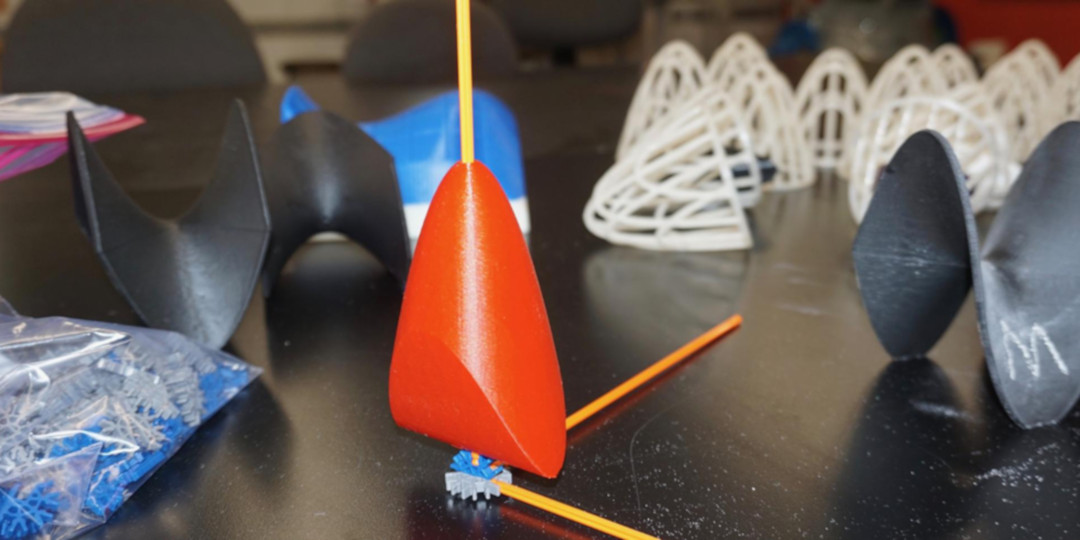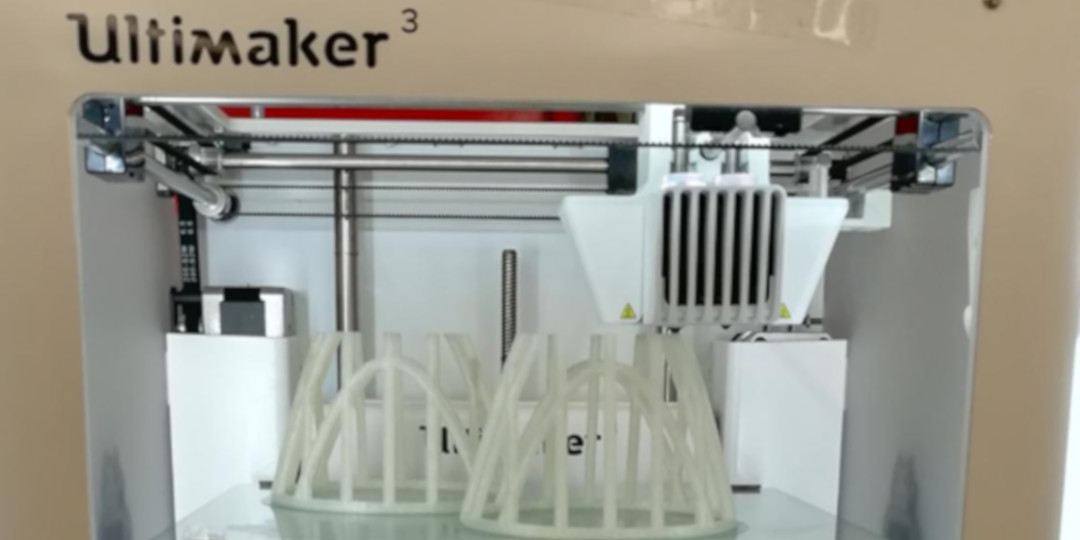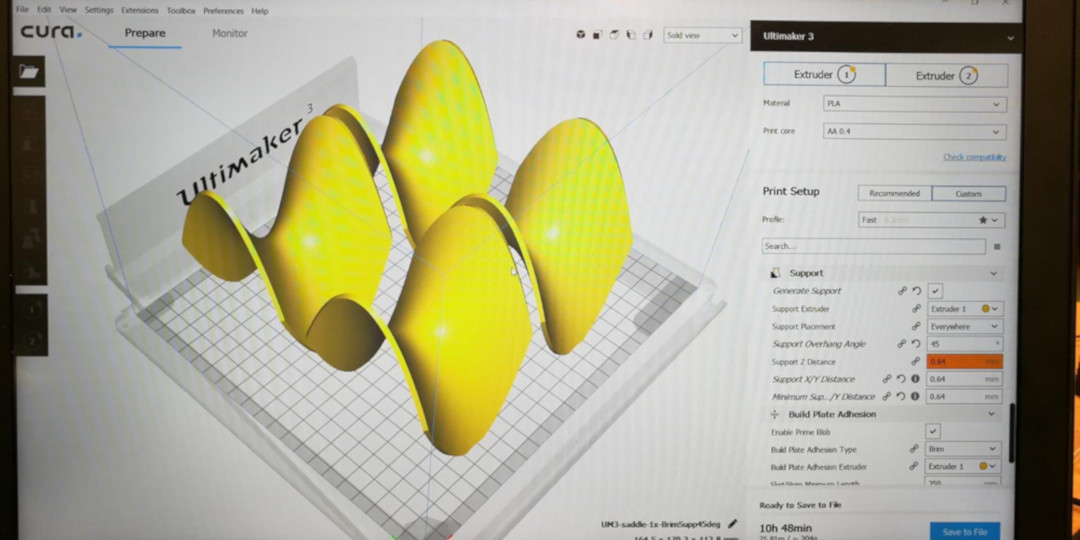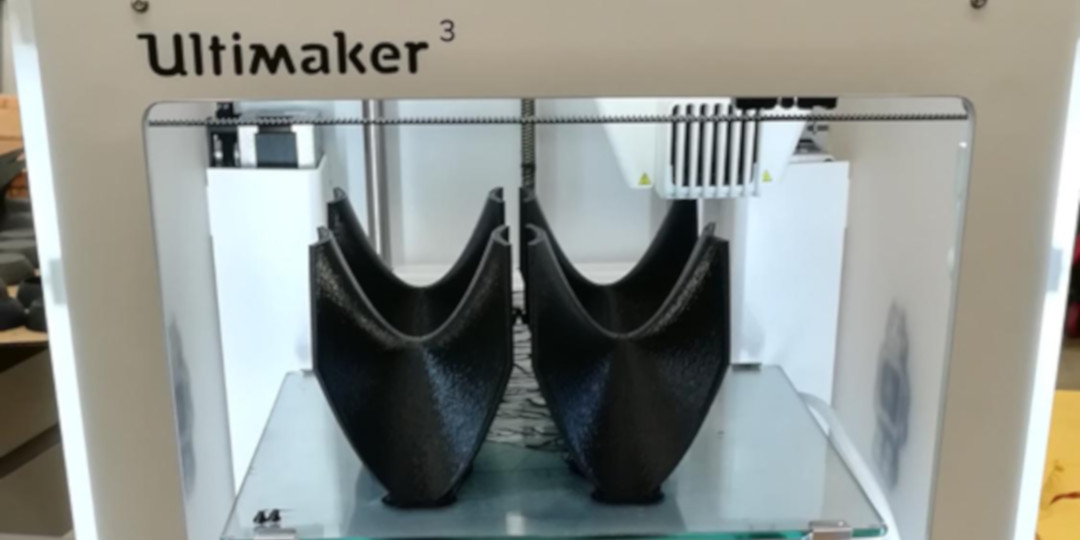What is the best way to teach concepts like surface area and volume relating to mathematical objects in a three-dimensional world? The curricular design team at Harvard University thinks they have the answer: put those objects in students’ hands. Literally.
Math 21a: Multivariable Calculus is Harvard’s largest math class, and it serves as a prerequisite for courses across the STEM disciplines. It is most students’ first math course involving significant three-dimensional spatial reasoning and visualization, and students must engage with the concepts they learned in single-variable calculus in the context of three-dimensional coordinate geometry. While most students in Math 21a are able to learn the procedures needed to do calculations in the course, some students either find the visualization component to be a significant impediment, or fail to attach geometric meaning to what they had learned.
In 2017, the curricular design team decided to add a new element to the course to target these student struggles: active learning lessons involving interactions with 3D models of the objects of study in the course. While over 500 students take Math 21a every year at Harvard, the course is not taught in a large lecture hall. Classes are taught exclusively in sections of thirty or fewer students so that students can work in small groups during class time. Our goal was to produce enough copies of a dozen different 3D models so that each small group could have one.
The project was dubbed Manipulative Calculus. While Senior Preceptor Janet Chen and I spent the spring semester of 2018 prototyping models and piloting lessons with small groups of students, I contacted Ultimaker, and they agreed to collaborate on the project. A few weeks later, their fleet of 3D printers had produced half of the models we needed. The rest of the models had some intricacies that required dissolvable supports, and to print these, we used two Ultimaker 3 printers in Harvard’s Instructional Physics Lab.
With the help of our project assistant and experienced maker Dishen "Dixon Magister" Yang, we kept the Ultimaker 3 printers churning out the rest of the models. The exceptional reliability of the machines and generous print bed allowed us to produce over 250 models in time for the end of summer.
The project “went live” in the fall 2018 semester. Hundreds of students sat down for the first day of Math 21a and were handed 3D printed models. In part of this first lesson, students had to figure out on paper the shapes of the cross-sections of a certain surface, then illustrate those cross-sections by drawing on the models themselves. Each model had been finished with chalkboard paint over the summer, so students could draw on the models then erase before the next class.
We used the models throughout the fall semester to let students engage with and attach geometric meaning to calculations involving functions and equations with several variables, volume, surface area, and more. We had designed the models together with a suite of curricular materials, including worksheets, lesson plans, related homework problems, and computer interactions. The idea was to make these lessons easy to use for both our teaching team, which includes a number of graduate student instructors, and by those outside our department.
We are in the process of assessing the effects of the project with the help of the Bok Center for Teaching and Learning, but anecdotally, we have found that not only do students develop a better understanding of the material with the 3D models in hand, but that we as instructors are better able to assess students’ conceptual knowledge when they explain their thinking using the models as props. Several of our undergraduate course assistants (who had taken Math 21a in prior semesters and are now part of the teaching staff) have told us that they wish they had had these models when they were first learning the material.
We plan to continue the use of these models in Math 21a next semester and into the future, hopefully applying what we’ve learned to other courses as well. We hope that our project will demonstrate that using 3D printed models for active learning instruction on this scale is now feasible thanks to precise, fast, affordable, and reliable printers like the Ultimaker 3.





















